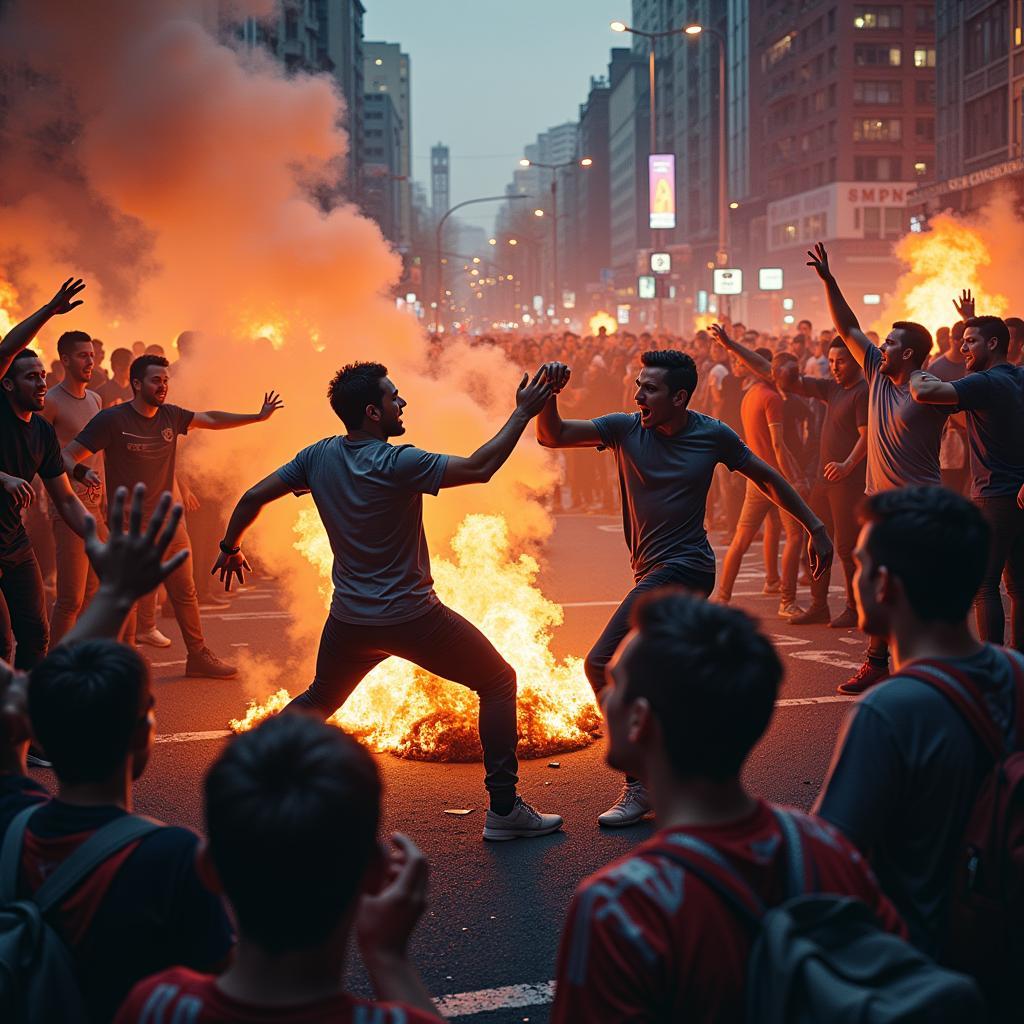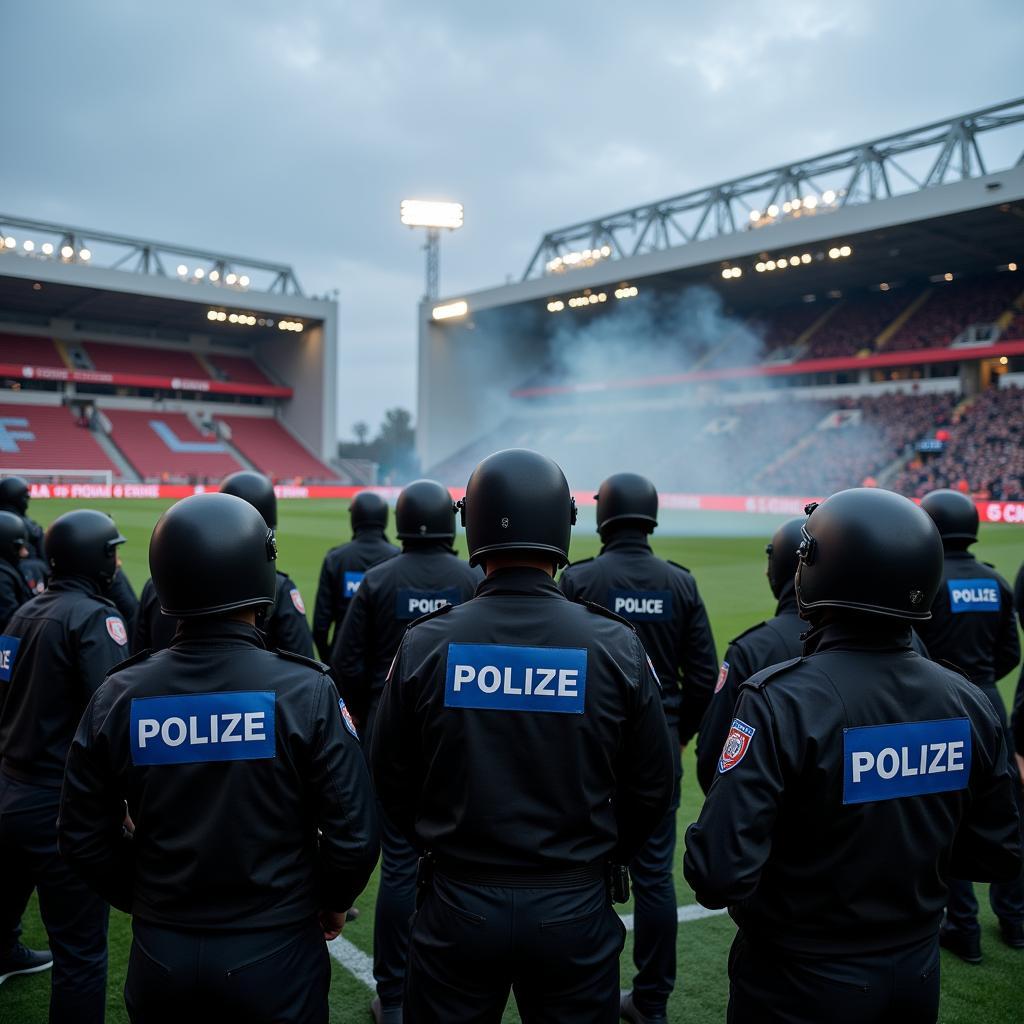Football, or soccer as it’s known in some parts of the world, is more than just a game. It’s a global phenomenon that ignites passions and unites millions under the banner of their beloved teams. However, this intense devotion can sometimes take a dark turn, leading to incidents of fan violence that mar the beautiful game. But what drives these acts of aggression, and how can we curb this disturbing trend?
The Psychology of a Fanatic: Unraveling the Roots of Football Violence
To understand why some fans resort to violence, we must delve into the complex psychology of fandom. For many, their team represents more than just a group of athletes; it embodies their city, their community, even their identity. A victory becomes a personal triumph, while a defeat cuts deep, triggering feelings of frustration and anger.
Several factors can contribute to the escalation of these emotions into violence:
- Group Mentality: Being part of a large, emotionally charged crowd can create a sense of anonymity and diminish individual responsibility, emboldening individuals to engage in behaviors they wouldn’t consider alone. This “mob mentality” can quickly spiral out of control, fueled by collective anger and a lack of individual accountability.
- Alcohol and Substance Abuse: Sadly, alcohol and drug use are often intertwined with football matches. These substances impair judgment and lower inhibitions, increasing the likelihood of aggressive behavior.
- Tribalism and Rivalry: The inherent tribalism in football, the “us versus them” mentality, can fuel hostility towards opposing fans. Historic rivalries, cultural differences, and even geographical proximity can exacerbate these tensions.
- Social and Economic Factors: Research suggests that fan violence is often more prevalent in societies grappling with social and economic inequality. Football can become an outlet for frustrations stemming from broader societal issues, leading to misplaced aggression.
From Stands to Streets: The Devastating Impact of Fan Violence
 Two groups of opposing football fans clashing in the streets
Two groups of opposing football fans clashing in the streets
The consequences of fan violence extend far beyond the stadium walls, casting a long shadow over the sport and society:
- Physical Harm: The most immediate and devastating impact is the physical harm inflicted on individuals, ranging from minor injuries to, in tragic cases, fatalities.
- Damage to Property: Riots and violent outbursts often result in significant damage to public and private property, costing communities dearly.
- Negative Image for the Sport: Such incidents tarnish the reputation of football, deterring sponsors, broadcasters, and families from associating with a sport marred by violence.
- Social Divisions: Fan violence can exacerbate existing social and cultural divisions, fostering fear, prejudice, and mistrust among different communities.
Tackling the Problem: Strategies to Combat Fan Violence
 A line of police officers maintaining order at a football match
A line of police officers maintaining order at a football match
Curbing fan violence requires a multi-faceted approach involving various stakeholders:
- Stricter Security Measures: Increasing security personnel at matches, implementing strict entry protocols, and utilizing advanced surveillance technology can help deter and manage potentially volatile situations.
- Alcohol Restrictions: Enforcing stricter regulations on alcohol sales and consumption inside and around stadiums can significantly reduce alcohol-related incidents.
- Fan Education and Engagement: Promoting positive fan culture through educational campaigns, community outreach programs, and collaboration with fan groups can help foster a sense of responsibility and respect among supporters.
- Swift and Severe Punishments: Imposing severe penalties on individuals involved in fan violence, including stadium bans, hefty fines, and even prison sentences, sends a clear message that such behavior will not be tolerated.
- Addressing Underlying Social Issues: Governments and communities must address the root causes of social unrest and inequality, providing better opportunities and addressing grievances that can contribute to fan violence.
Conclusion: Protecting the Beautiful Game
Fan violence is a complex issue with no easy solutions. However, by understanding the underlying factors, implementing preventative measures, and fostering a culture of respect and responsibility within the football community, we can work towards eradicating this blight on the beautiful game. Only then can we truly enjoy the sport in all its glory, celebrating the passion and camaraderie it inspires without fear of violence.


